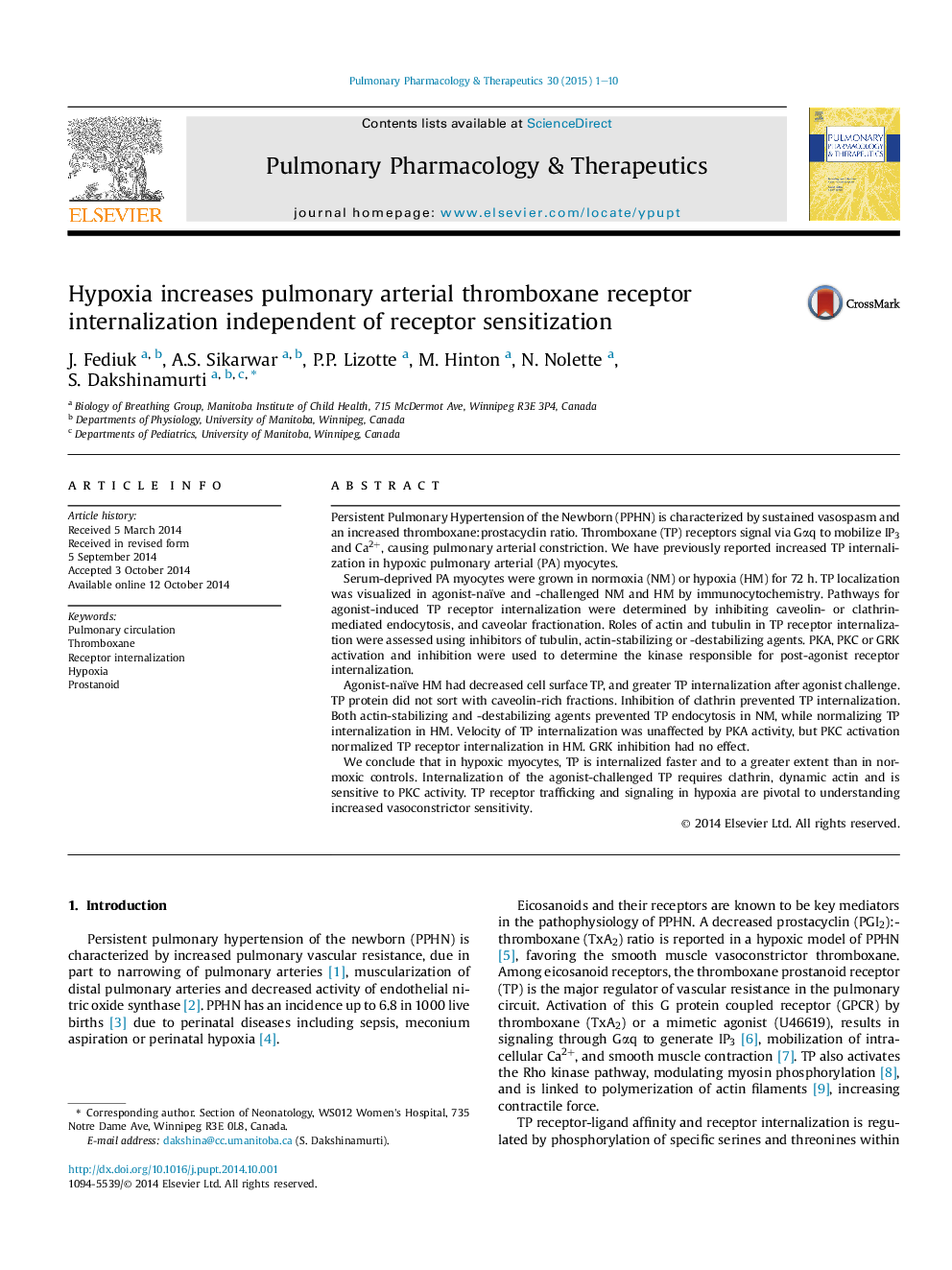| Article ID | Journal | Published Year | Pages | File Type |
|---|---|---|---|---|
| 5845694 | Pulmonary Pharmacology & Therapeutics | 2015 | 10 Pages |
Persistent Pulmonary Hypertension of the Newborn (PPHN) is characterized by sustained vasospasm and an increased thromboxane:prostacyclin ratio. Thromboxane (TP) receptors signal via Gαq to mobilize IP3 and Ca2+, causing pulmonary arterial constriction. We have previously reported increased TP internalization in hypoxic pulmonary arterial (PA) myocytes.Serum-deprived PA myocytes were grown in normoxia (NM) or hypoxia (HM) for 72 h. TP localization was visualized in agonist-naïve and -challenged NM and HM by immunocytochemistry. Pathways for agonist-induced TP receptor internalization were determined by inhibiting caveolin- or clathrin-mediated endocytosis, and caveolar fractionation. Roles of actin and tubulin in TP receptor internalization were assessed using inhibitors of tubulin, actin-stabilizing or -destabilizing agents. PKA, PKC or GRK activation and inhibition were used to determine the kinase responsible for post-agonist receptor internalization.Agonist-naïve HM had decreased cell surface TP, and greater TP internalization after agonist challenge. TP protein did not sort with caveolin-rich fractions. Inhibition of clathrin prevented TP internalization. Both actin-stabilizing and -destabilizing agents prevented TP endocytosis in NM, while normalizing TP internalization in HM. Velocity of TP internalization was unaffected by PKA activity, but PKC activation normalized TP receptor internalization in HM. GRK inhibition had no effect.We conclude that in hypoxic myocytes, TP is internalized faster and to a greater extent than in normoxic controls. Internalization of the agonist-challenged TP requires clathrin, dynamic actin and is sensitive to PKC activity. TP receptor trafficking and signaling in hypoxia are pivotal to understanding increased vasoconstrictor sensitivity.
